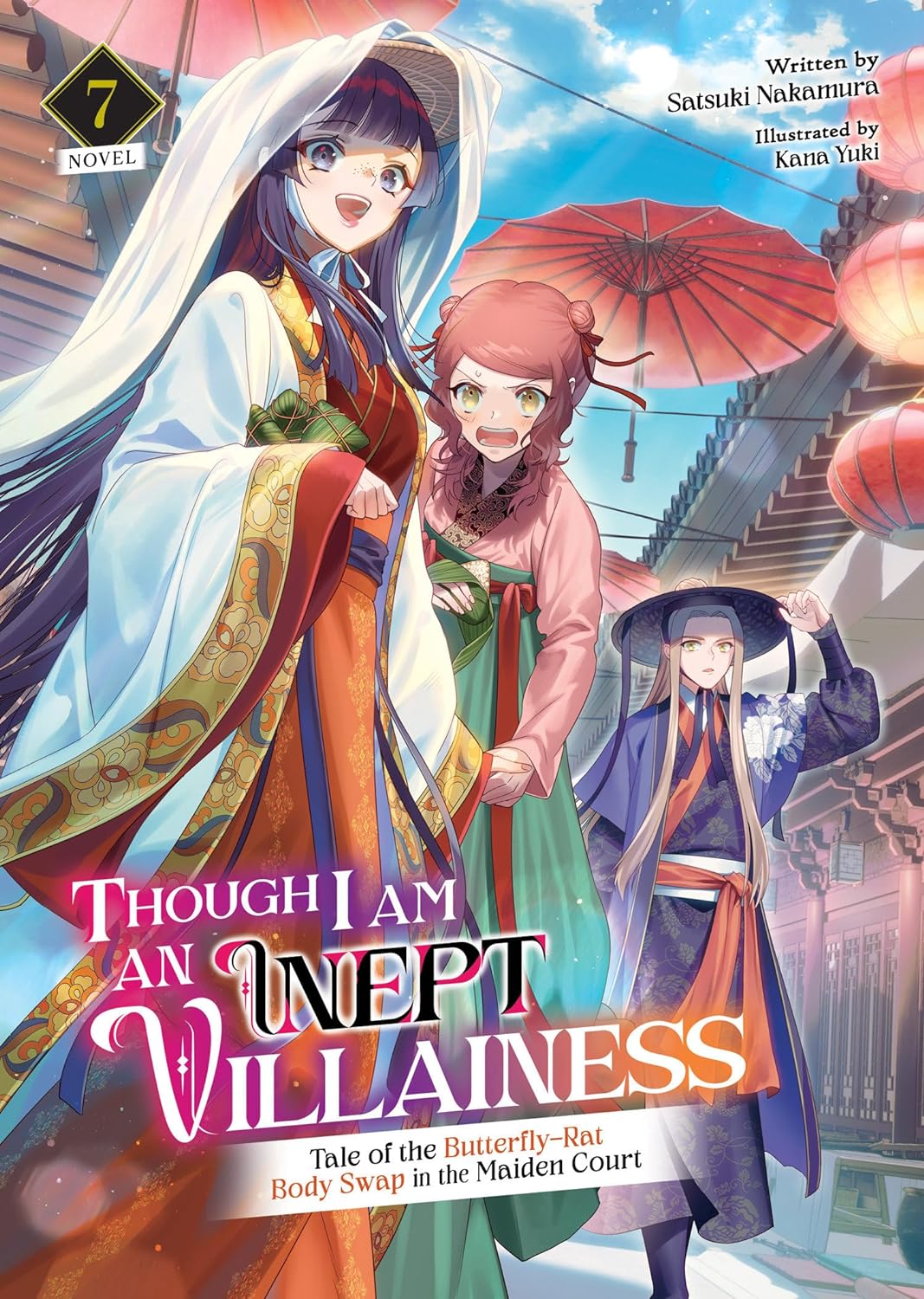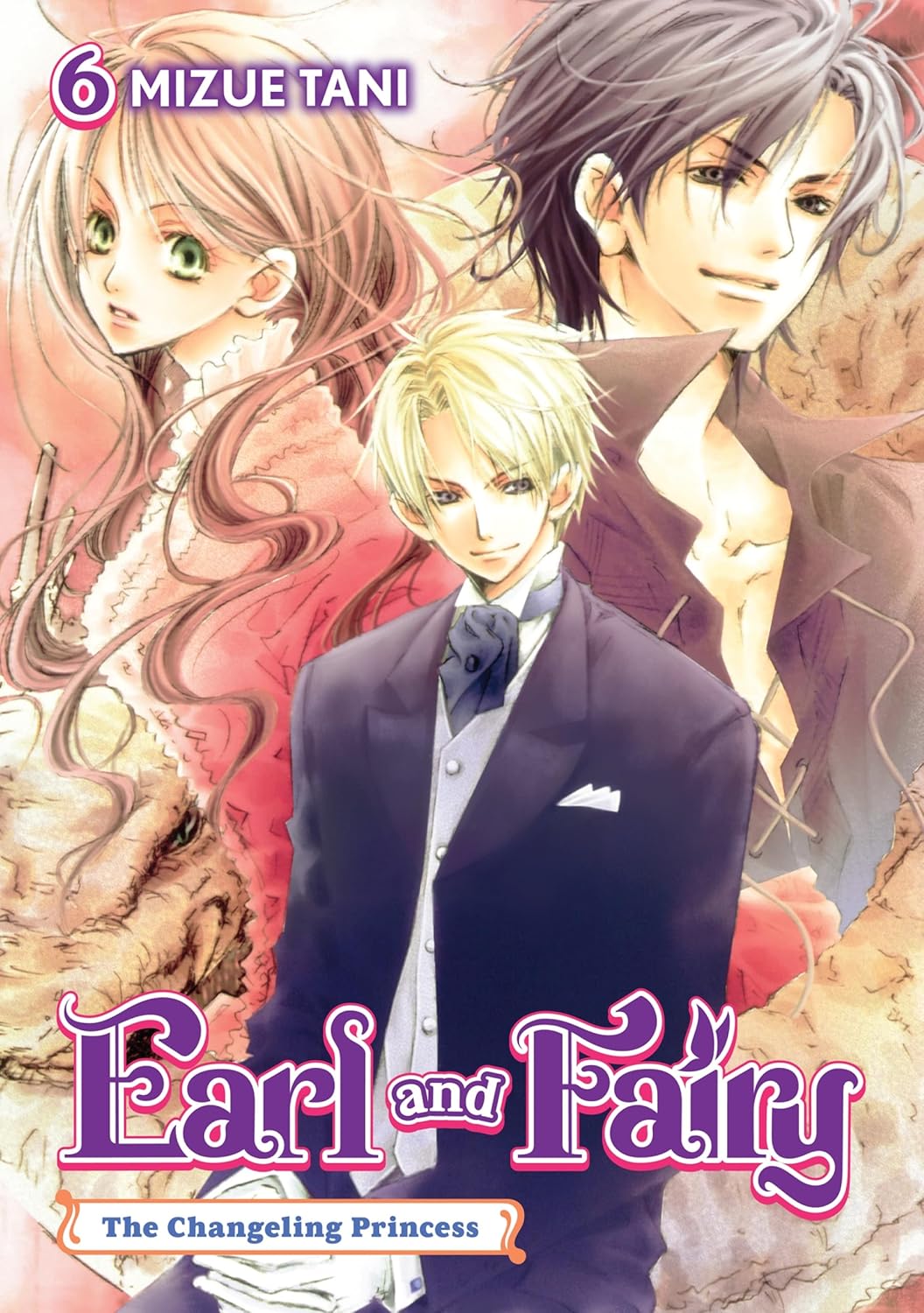By Satsuki Nakamura and Kana Yuki. Released in Japan as “Futsutsuka na Akujo dewa Gozaimasu ga: Suuguu Chouso Torikae Den” by Ichijinsha Novels. Released in North America by Airship. Translated by Tara Quinn.
For the most part, the idea of romance has been about 4th or 5th on the list of reasons to read this series. We know that Reirin is loved by more than one man, but honestly until recently Gyoumei has not really had enough focus to make us care about him enough. But (perhaps because they realized that the readers were starting to wonder if this was going to be a yuri series given the relationship between Reirin and Keigetsu) this volume starts to concentrate a bit more on the romantic chemistry between some of the potential couples – indeed, we get new potential couples here. The other major aspect of this volume, which has again been touched on but not overused in previous books but they’re usually too serious to do it for long, is farce. The entire plot is that our party is split up and slowly converge at once place, and when they get there they all open doors at the same time. All it needed was a plate of sardines.
After the events of the last two books, Reirin and Keigetsu need to switch back to their own bodies. Unfortunately, the Emperor is apparently searching for evidence of magic practitioners, who are supposed to be dealt with with great prejudice. The main characters suspect the Emperor is just doing this for show, but they decide it’s safer to do the switch out in the outside world, so they all agree to leave the inner court, go to a restaurant, and switch there. They split up to avoid being obvious. Reirin, with Leelee (and Gyoumei trailing them) comes across a girl trying to find her mistress, who was sold to pay off debt. Keigetsu and Keishou walk around looking at jewelry, with Keigetsu in full “every word out of my mouth is full of spite and anger” mode, but find illicit goods. Tousetsu and Keikou hide out at a restaurant that turns out to be in the process of a shakedown by thugs. And Shin-u, joined by Unran, goes to a teahouse which they find is actually a brothel. All of this ties into one gambling house.
In case that lengthy description did not clue you in, this is a caper book, and decidedly lighter in tone than the previous six, though there is an ominous cliffhanger at the end that suggests the party is over. It reads a bit like a short story volume, and as such there are some that are better than others. the highlight of the book for me was the incredible fight/flirting/takedown of bad guys by Keikou and Tousetsu, as she realizes that he does not, like every other man she’s ever dealt with, hate women who can fight, and he realizes that she’s able to keep up with him. It’s also a hilarious scene. Speaking of which, as always Reirin is a hoot, ending up in a gambling den where she immediately disquiets everyone by throwing a knife at an erotic piece of art that penetrates the member of the rapist portrayed, causing every man there to feel… uncomfortable. She also has terrific chemistry with Gyoumei, though, much to Leelee’s horror, they don’t balance each other out but instead are like a gasoline fire and a bigger gasoline fire combining.
If you aren’t already reading this, I don’t know what more I can do to convince you. Every single volume is magical.



